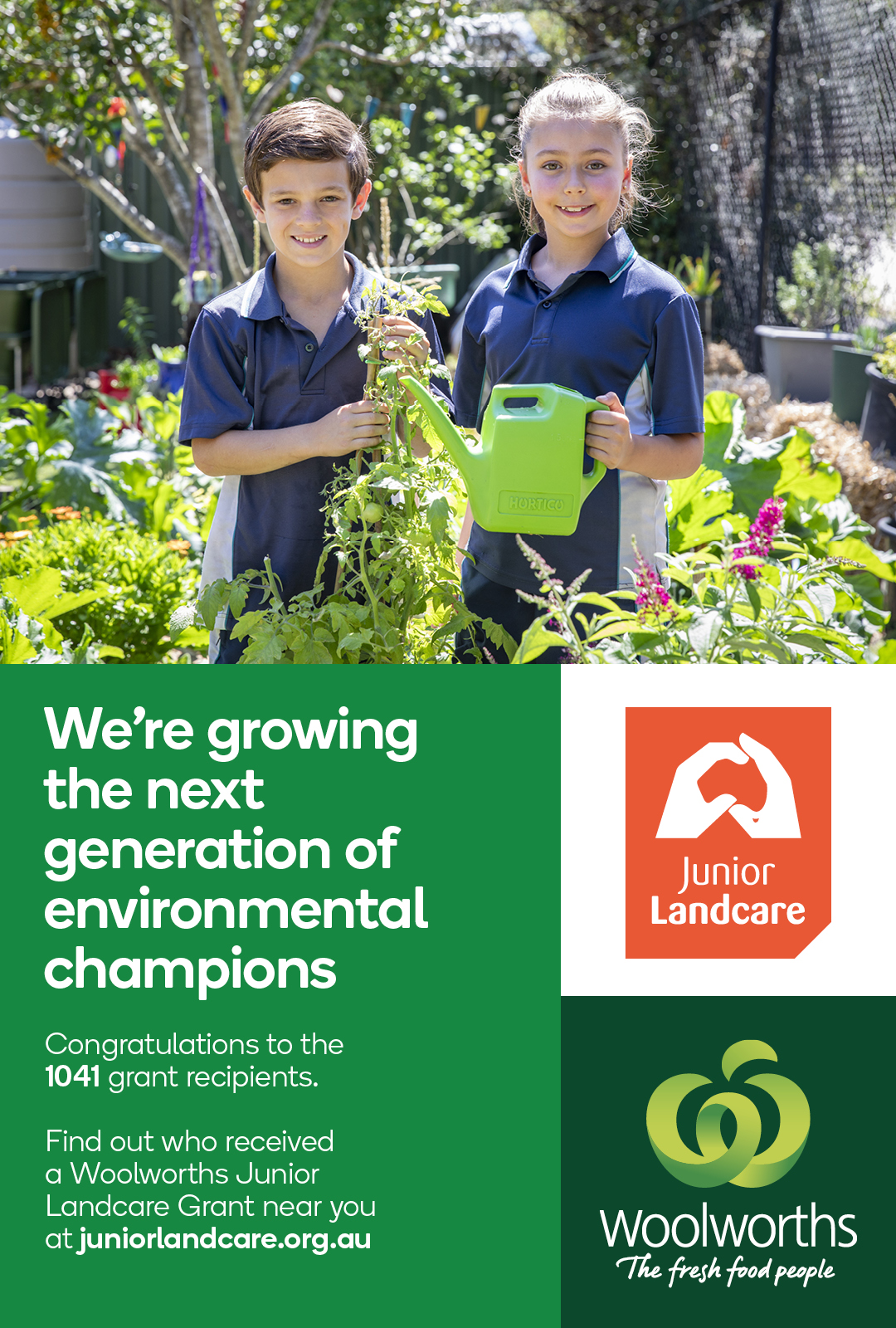CASE STUDY

Age Groups: 7-13
Grant Name:
School: North Freemantle Primary School
Grant Sponsor: Woolworths
Project Overview
North Freemantle Primary School had a vegetable garden. However, the invasion of nearby tree roots were preventing the garden from flourishing. The school wanted to increase the productivity and effectiveness of this garden space and make it a sustainable setting to enable students to grow their own food and to prepare, cook and share the fruits of their labour.
They decided the best way to do establish eight wicking vegetable garden beds.
In late 2019, the school was successful in obtaining a Woolworths Junior Landcare Grant to fund their wicking bed project.
A mini excavator and bobcat removed the tree root infested soil from the remaining seven beds. At a busy bee involving parents and other community volunteers, the school’s own soil was blended with a mix of soil and compost (from the school), recycled sifted soil from the excavated beds and special nutrient amendments. Around 50 sets of big and little hands from the school community were kept busy for the entire day constructing all the layers of the wicking beds.
The garden beds were planted by students during and after the busy bee and the seedlings have demonstrated incredible growth rates and fruited well.
Environmental Outcomes
The wicking beds have reduced the need for overhead irrigation and mains water consumption. The reservoirs have been filled by recent rainfall events.
The construction of the wicking beds provided the opportunity to renovate the soil with blended compost and soil amendments.
The school is working on a system to compost all their food waste along with chicken coup manure on site that can continue to nourish the vegetable beds every season.
Educational Outcomes
The students learned that wicking beds are designed to take advantage of roots drawing up water molecules known as capillary action. A reservoir of water is provided under the growing medium of soil to allow roots to access the moisture they need without the evaporation and water loss that can occur from surface irrigation.
The students employed design and technology the construction of the wicking beds and helped with the layout of seedlings in a planting plan that respects the needs and growth habits of plant species.
They learned more about sustainability by using recycled and locally sourced materials in the wicking beds and through reduced water use. Biological sciences are being incorporated and demonstrated as seasonal crops are planted out, observed weekly, documented, harvested and eaten.
The children enjoyed planting seedlings and talking about the vegetables they are planting. They will continue to assist with checking the level of the reservoir and ensuring wicking 'capillary action' is occurring and the plants roots can access water.
The school aims to plant twice a year and reinvigorate the soil with compost and amendments at that time. Students will mulch and feed seedlings as required by the season and crops.
Conclusion
Visually the space does not look any different despite all the work engineering the inner workings of the garden beds.
However, the seedlings are very responsive to the improved soil blend with better moisture holding qualities and available nutrients. The plant health, vigour and fruit set is very promising from the first lot of plantings for the 2020 winter season.
"The pride demonstrated by the parents and 40 students involved with the production line was evident as they all realised that they were part of a team. The Busy Bee to work on the wicking beds provided a common purpose for community engagement, especially as this all occurred at the beginning of the COVID-19 restrictions. The unity and social contacts made within the community was an unanticipated bonus in light of the world events that followed," says Linda Chandler, North Fremantle Primary School Principal.
 Teachers & Educators
Teachers & Educators Youth or Community Groups
Youth or Community Groups